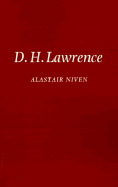Summary
In a letter to his friend W. E. Hopkin on 20 February 1911 D. H. Lawrence added this brief postscriptum: ‘I was very young when I wrote the Peacock – I began it at twenty. Let that be my apology’ The White Peacock certainly falls short of the intellectual strengths we find in the later novels, yet it too deals seriously with relationships between the sexes. It has too often been dismissed as worth no more than an historically curious glance. With all its imperfections, its occasional crudities of characterization and its sometimes gratuitously self-indulgent literariness, this first novel reveals a side of Lawrence which he consciously abandoned as he waded into the currents of psychological self-analysis, moral discovery and speculation on the nature of society. From the start he establishes himself as a novelist absorbed in the interior lives of his characters, yet acutely observant of appearances.
The degree of incident in almost all Lawrence's full-length fiction can easily be overlooked, for, with rare exceptions like the attack on Jamiltepec in The Plumed Serpent, it resides more in what happens within relationships than in dramatic actions or external adventures. The White Peacock exemplifies this. Cyril, who narrates the tale, tells us about his sister, Lettie Beardsall, the man who loves her, George Saxton, and the man she marries, Leslie Tempest.
- Type
- Chapter
- Information
- D. H. LawrenceThe Novels, pp. 10 - 26Publisher: Cambridge University PressPrint publication year: 1978

